Phonics
PHONICS
At IQRA Academy we use the Read Write Inc (RWI) programme to get children off to a flying start with their reading and writing.
Using RWI, the children learn to read fluently and effortlessly so that they can put all their energy into comprehending what they have read.
When using RWI to read the children will:
- learn that sounds are represented by written letters
- learn 44 sounds and the corresponding letter/letter groups using simple picture prompts
- learn how to blend sounds
- learn to read words using Fred Talk
- read lively stories featuring words they have learned to sound out
- show that they comprehend the stories by answering questions
When using RWI to write the children will:
- learn to write the letters/letter groups which represent 44 sounds
- learn to write words by saying the sounds in Fred Talk
- write simple sentences
The RWI Phonics scheme is split into 3 sets. Children are regularly assessed by their class teacher, and they will move through the sets.
Set One
Set 1
First, your child will learn to read:
-
Set 1 speed sounds (these are sounds written with one letter)
-
Set 1 sounds written with two letters (special friends)
-
Simple words containing these sounds, by sound-blending
-
Read words in carefully levelled Red, Green and Purple storybooks.
Set 1 Sounds are taught in the following order together with rhymes to help children form the letters correctly and instantly recognise sounds ready for blending.
| Set 1
|
Set 1 sounds:
Below you can find the pictures that match the short rhymes. These help the children learn and remember them.
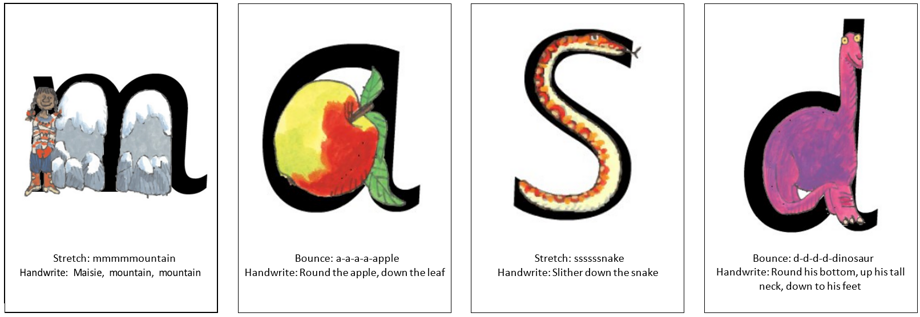
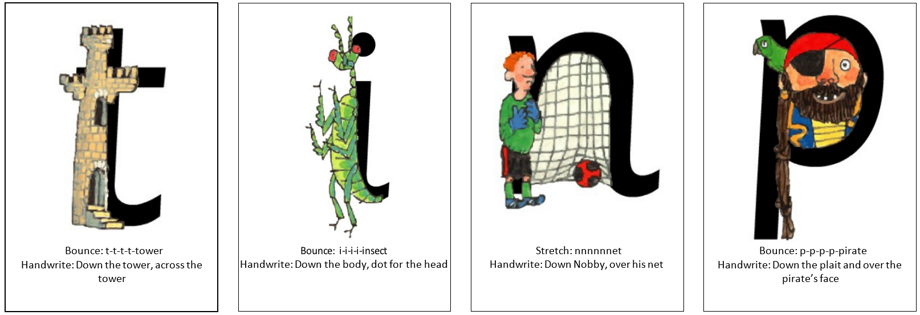

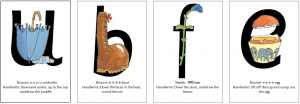

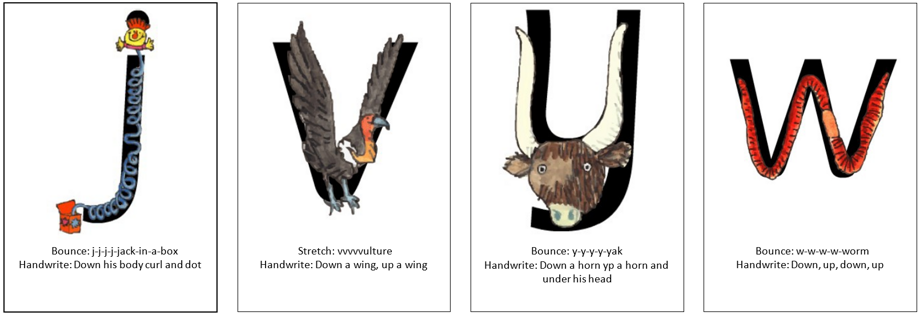
Please do not use letter names at this early stage.
Clear pronunciation of sounds is extremely important. This video will demonstrate how to say sounds clearly.
Set Two
Set 2
Now that your child knows all their single sounds, some simple ‘special friends’ and has learnt to blend simple words, they will now learn:
-
to read and recognise set 2 speed sounds:
ay ee igh ow oo oo ar or air ir ou oy
-
to read words containing these sounds
-
read a wider range of ‘red words’. (Words that are harder to read using phonic skills)
-
to read Pink, Orange and Yellow Storybooks, building speed and fluency.
Set 2 sounds:
Each sound is linked to a picture hook and a rhyme to help the children learn and remember the sounds.
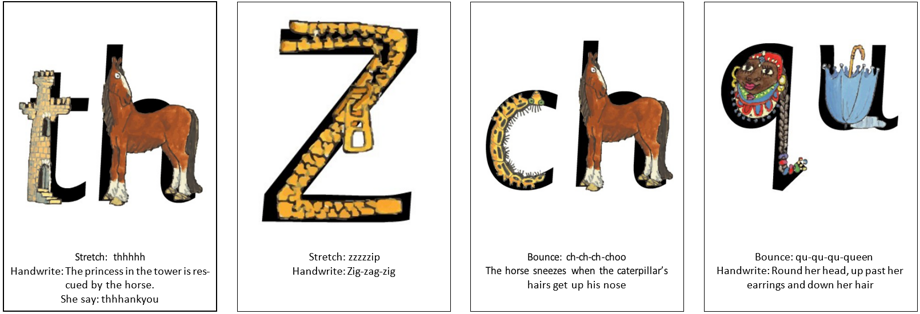
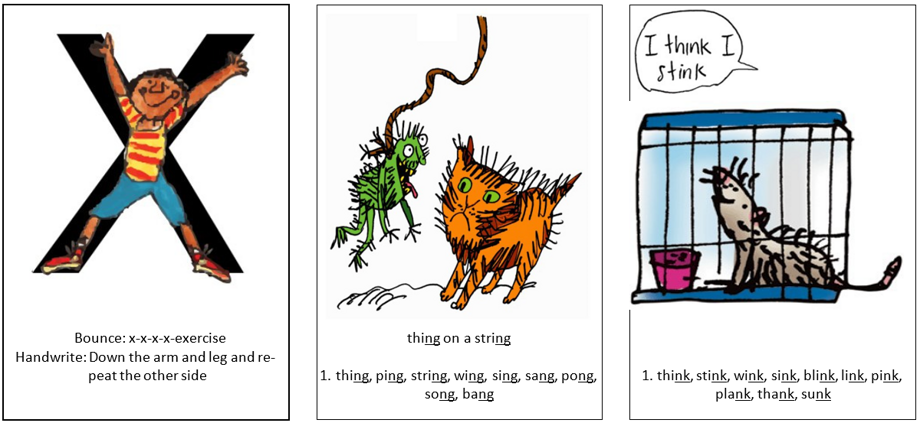
Children will be asked to read some green words.The set 2 sound pronunciation is shown in this video:
When reading these words, children are asked to:
1. Look for any special friends
2. Fred talk the word
3. Read the word
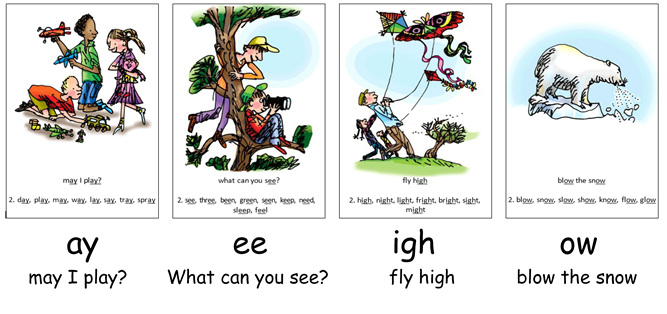
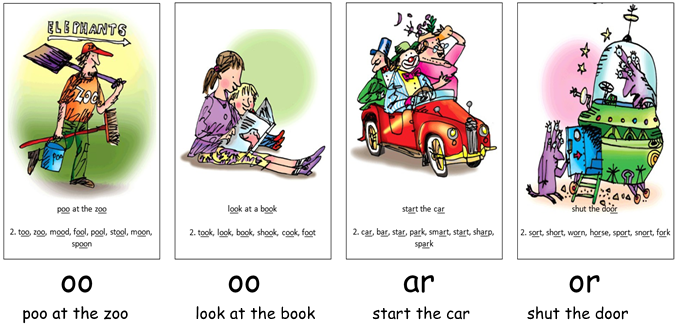
Set Three
Set 3
Your child is now growing in reading ability and confidence. In Set 3, they will learn to:
-
read set 3 speed sounds:
ea oi a-e i-e o-e u-e aw are ur er ow ai oa ew ire ear ure
-
read words containing these new sounds
-
read further ‘red words’ that are harder to read using phonic skills.
-
read Blue and Grey Storybooks with increasing speed
Set 3 sounds:
Each sound is linked with a picture and rhyme to help the children learn and remember them.
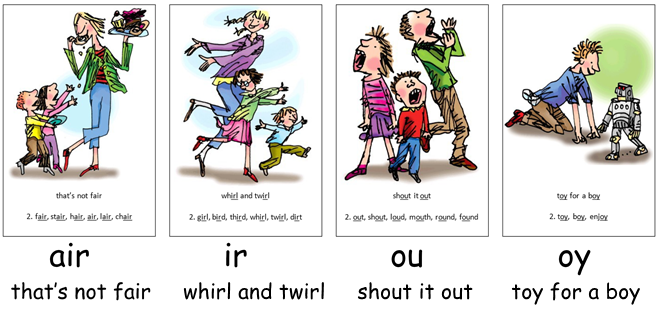
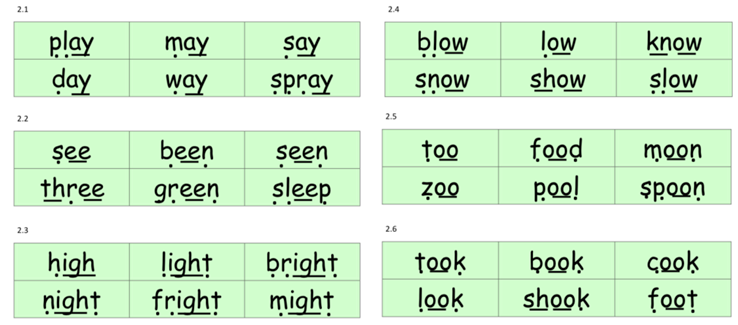
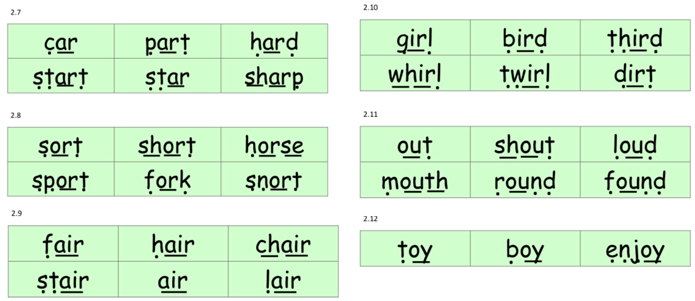


The pronunciation of these sounds can be found near the end of the below video.
Children will be asked to read some green words.
When reading these words, children are asked to:
1. Look for any special friends
2. Fred talk the word
3. Read the word
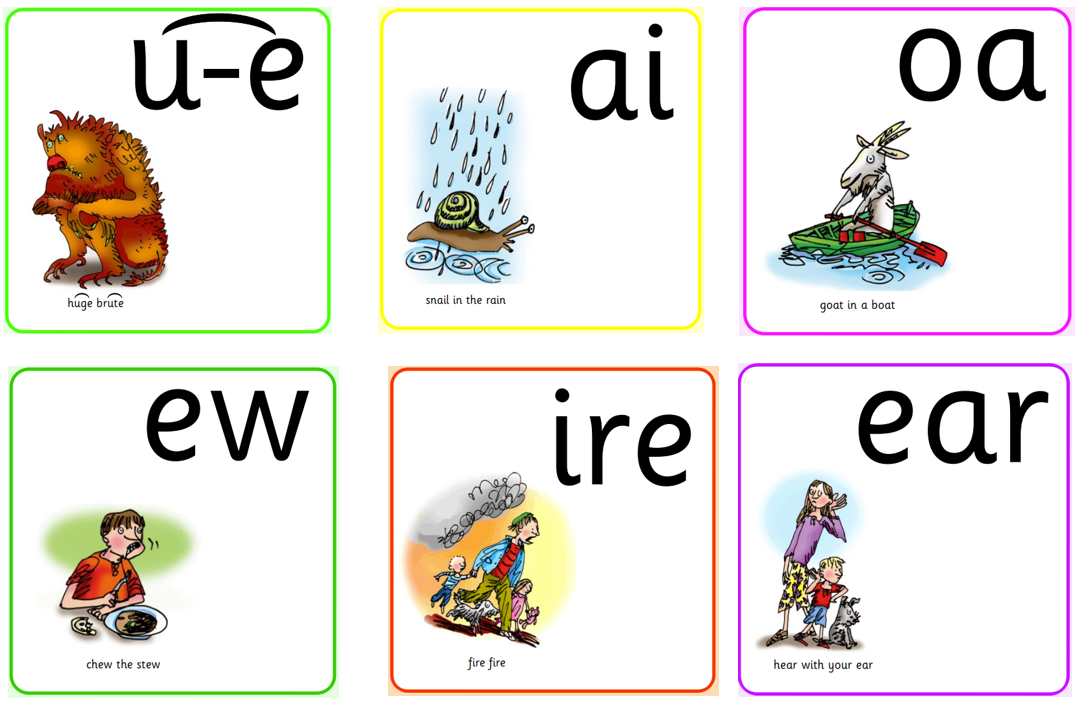


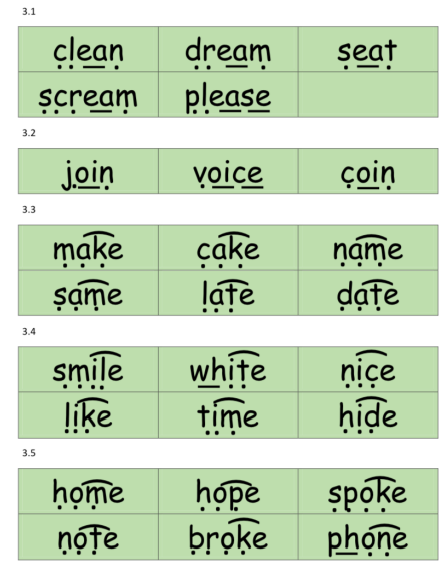
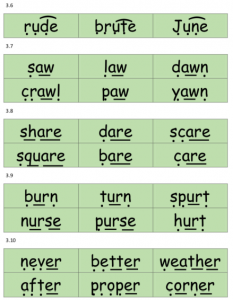
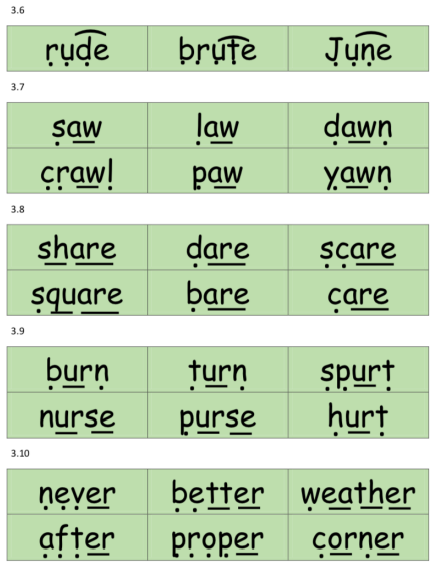
Year 1 National Phonics Screening Check
The National Phonics Screening Test was introduced in 2012 to all Year 1 pupils. It is a short, statutory assessment to confirm whether individual pupils have learnt phonic decoding to an appropriate standard. The test is usually completed in June in Year 1.
How is the check structured?
It comprises of a list of 40 words that the children are required to read. The list is a combination of both real and nonsense words which rely purely on using phonics to decode. The nonsense words are words that have been made up and will be shown with a picture of an imaginary creature to help them.
During the assessment, the children will be sitting with a teacher one to one reading the words. It should take between 5-10 minutes. The children will largely be unaware of it being a test as they have already participated in some practice ones.
What are nonsense words?
Your child will be told during the check which words are nonsense words (words that he/she will not have seen before). Your child will be familiar with this because we already use nonsense words when teaching phonics in school. Nonsense words are important to include because words such as ‘vap’ or ‘jound’ are new to all children. Children cannot read the nonsense words by using their memory or vocabulary; they have to use their decoding skills. Pupils who can read nonsense words should have the skills to decode almost any unfamiliar word.
What happens if a child struggles with the screening check?
All children are individuals and develop at different rates. The screening check ensures that teachers understand which children need extra help with phonic decoding. Following the data from the test, we will then provide extra support and intervention work for the children who did not pass.
Example test words:
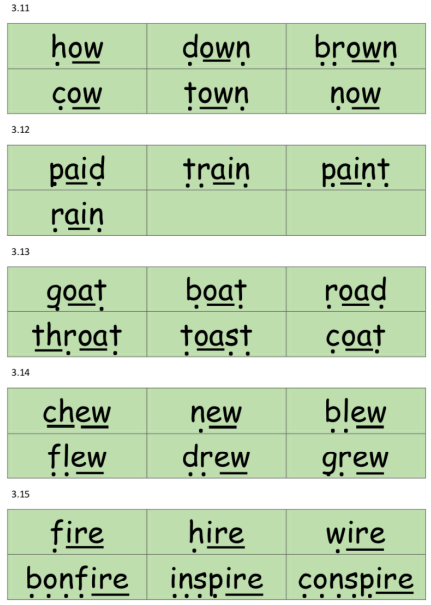
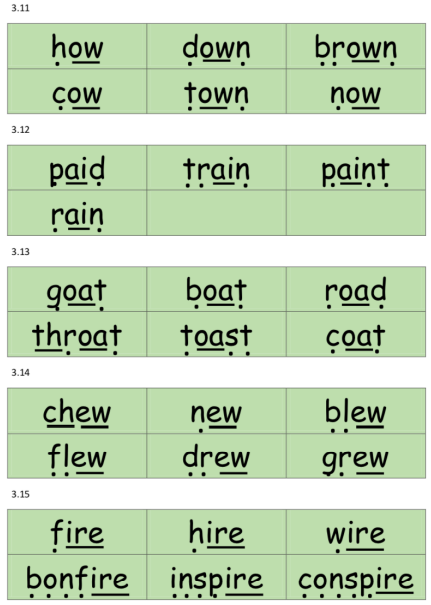

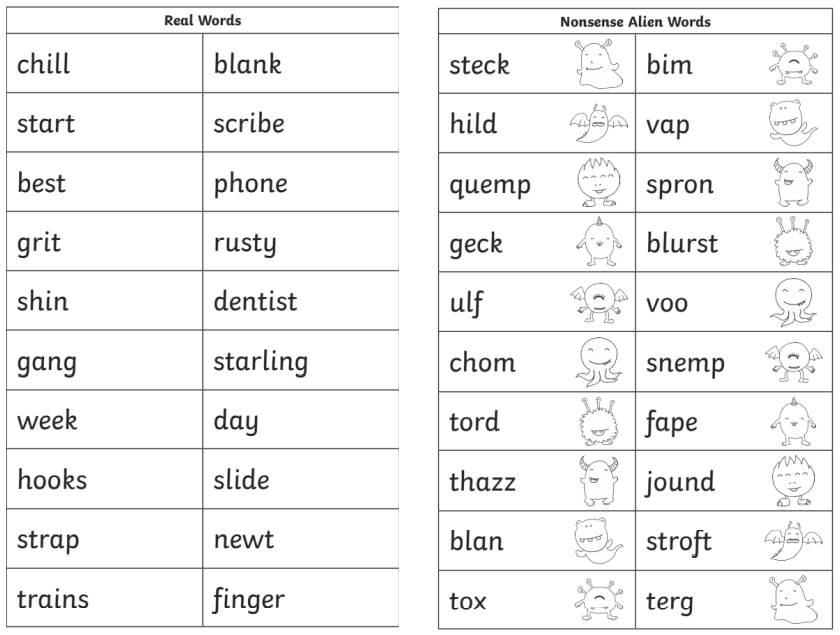
How to Help Your Child Learn to Read Through Phonics
• Read their weekly reading book with them. With all books, encourage your child to sound out unfamiliar words and then blend the sounds together from left to right rather than looking at the pictures to guess. Once your child has read an unfamiliar word, you can talk about what the word means and help them to follow the story.
• Support them with decoding the words, ask them questions about what they have read and complete the quizzes.
• Try to make time to read with your child every day. Grandparents and older brother or sisters can help too. Encourage your child to blend all the sounds in a word themselves.
• Immerse them in a love of reading. Share books and magazines with them, take them to the library to choose books, read to them regularly, point out words and sentences around you.
• Word games like ‘I-spy’ can also be an enjoyable way of teaching children about sounds and letters. You can also encourage your child to read words from your shopping list or road signs to practise phonics.
• Create your own nonsense words with your child using the speed sounds and then see if they can decode the words accurately.
• Phonics Play has lots of fun games where the children have to distinguish between real and nonsense words. https://www.phonicsplay.co.uk
• BBC Bitesize has lots of phonics games and videos to support with reading. https://www.bbc.co.uk/bitesize
• There are some example phonics lessons on the Ruth Miskin Training YouTube page. https://www.youtube.com/playlist?list=PLDe74j1F52zR84egIycRjjXMafuet0zJI • There are lots of fun online reading games on the Top Marks website. https://www.topmarks.co.uk
• Phonics Bloom has lots of interactive online phonics games. https://www.phonicsbloom.com
• ICT Games has a range of phonics, reading, writing and spelling games. https://www.ictgames.com/mobilePage/literacy .html
• Oxford Owl has a range of decodable story books for the children to read at home. This also has some quizzes for the children to complete. https://home.oxfordowl.co.uk/reading/reading-schemes-oxford-levels/read-write-inc-phonics-guide/
Reading
At IQRA Academy, we consider reading to be an essential skill that will be a huge factor in ensuring success later in life. This is why we place a large focus on helping our children master this skill and become confident readers.
Reading opens the door to learning. A child who reads a lot will become a good reader. A good reader will be able to read more challenging materials. A child who reads challenging materials is a child who will learn. The more a child learns, the more he or she will want to find out.
Story time
At IQRA Academy we provide children in EYFS-Y3 with story time. This involves children with the opportunity to listen to stories that have been carefully selected by their teachers.
Story telling provides children with a window to new worlds. It gives them the opportunity to learn new ideas and information. Children are exposed to new vocabulary, and they can learn valuable life lessons through listening to engaging and exciting stories.
We send two books home with children every week. One of these books will be matched to the child’s reading ability and the other book is selected by the children to promote reading for pleasure. This book can be read alongside a parent/carer.
Below you will find some links to online stories.
| Little Bear Stories written by Martin Waddell | https://www.bbc.co.uk/programmes/p019gl16
|
| Crazy Camelot Capers written by Tony Mitten | https://www.bbc.co.uk/programmes/p011ssrd
|
| The Monster Crisp-Guzzler written by Malorie Blackman | https://www.bbc.co.uk/programmes/p011t3y9
|
| Bob and the House Elves written by Emily Rodda | https://www.bbc.co.uk/programmes/p011n87z
|
| Fig’s Giant written by Geraldine McCaughrean | https://www.bbc.co.uk/programmes/p011mww0 |
| Explorer Trauma written by Sue Mongredien | https://www.bbc.co.uk/programmes/p011ms4m
|
| Snow Dragon written by Vivian French | https://www.bbc.co.uk/programmes/p011lb5t |
| The Great Tug of War written by Beverley Naidoo | https://www.bbc.co.uk/programmes/p011l6by
|
| Shampoozel written by Laurence Anholt | https://www.bbc.co.uk/programmes/p011l36j
|
| Rastamouse written by Michael de Souza | https://www.bbc.co.uk/programmes/p011mdcx |
Read Write Inc Speed Set 1 sounds


